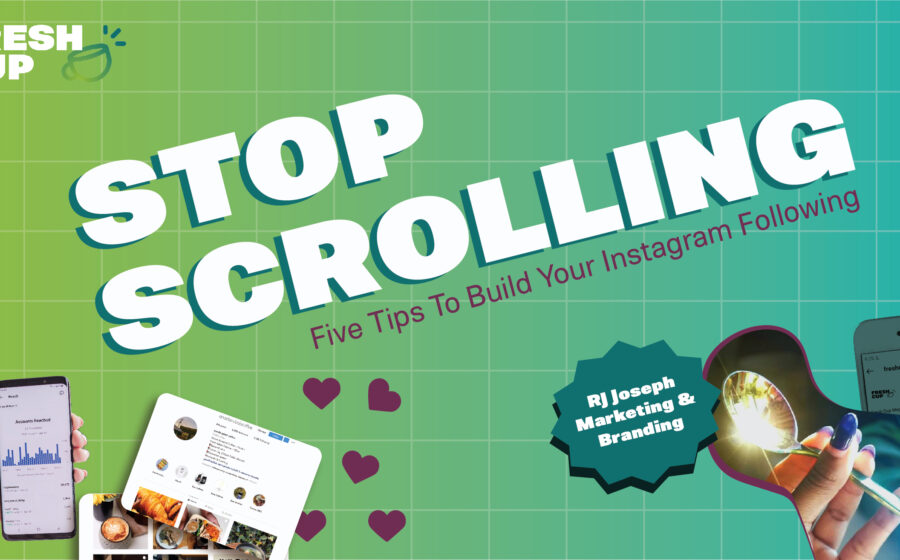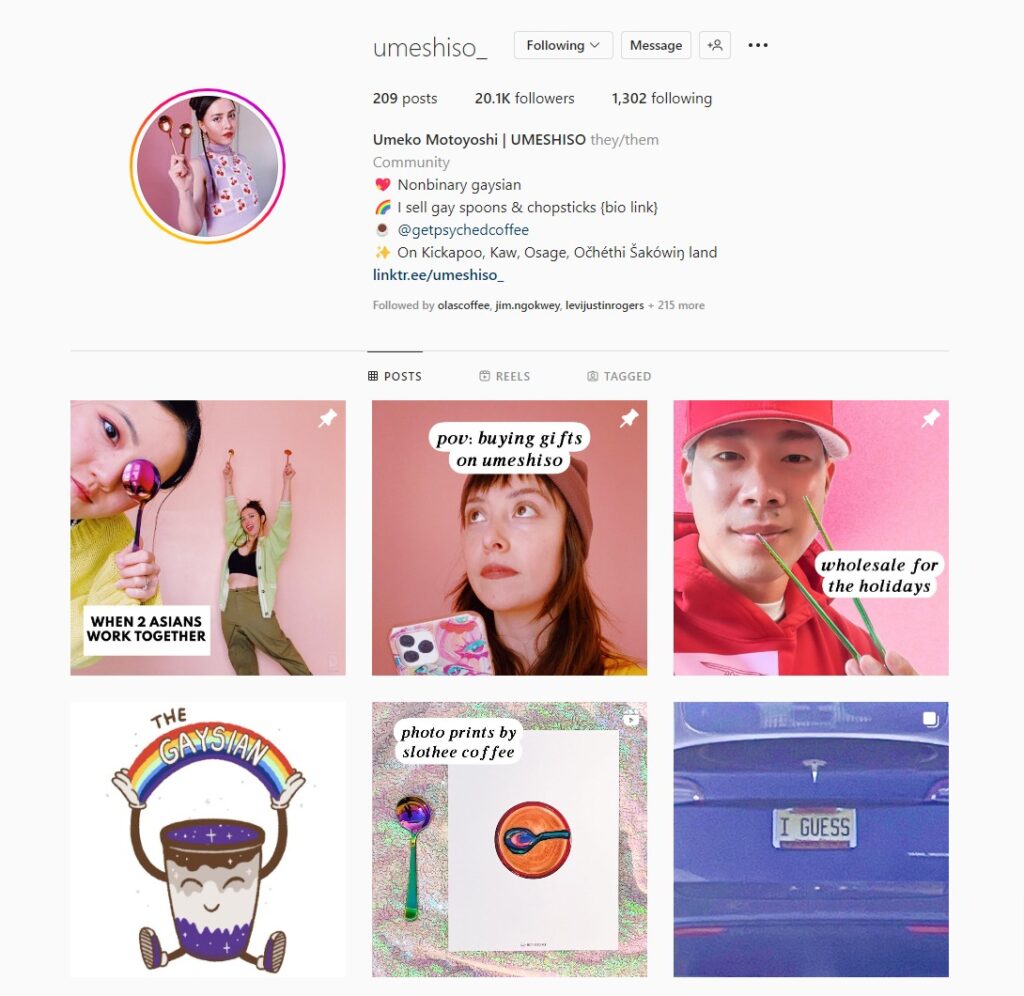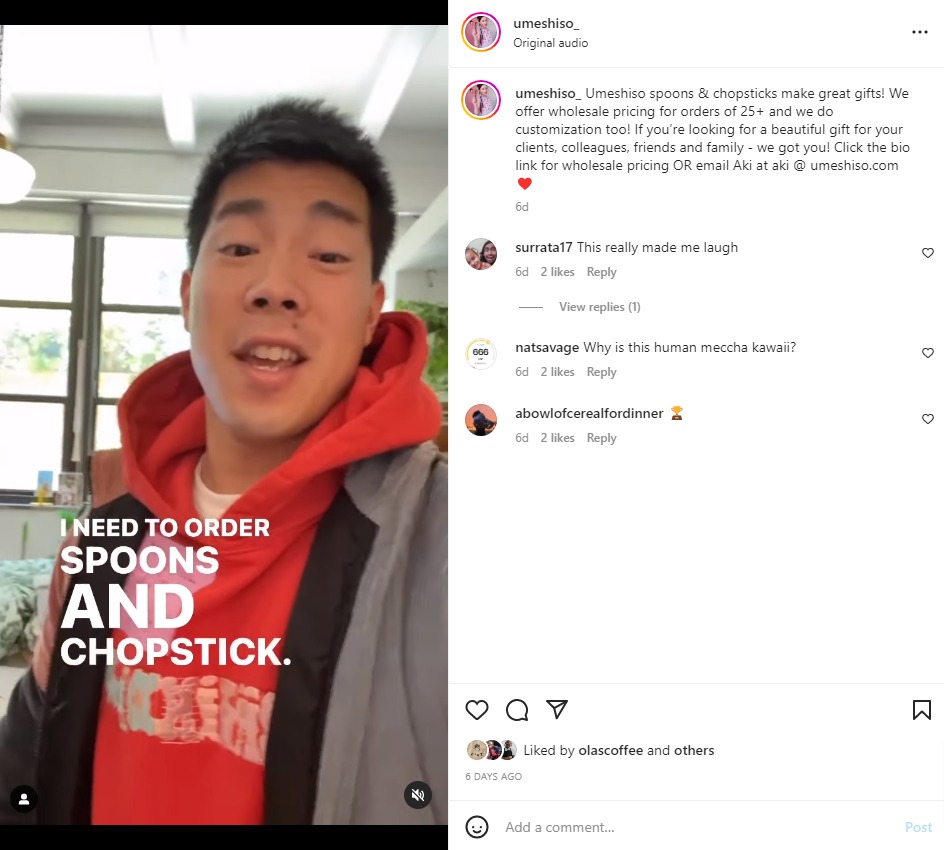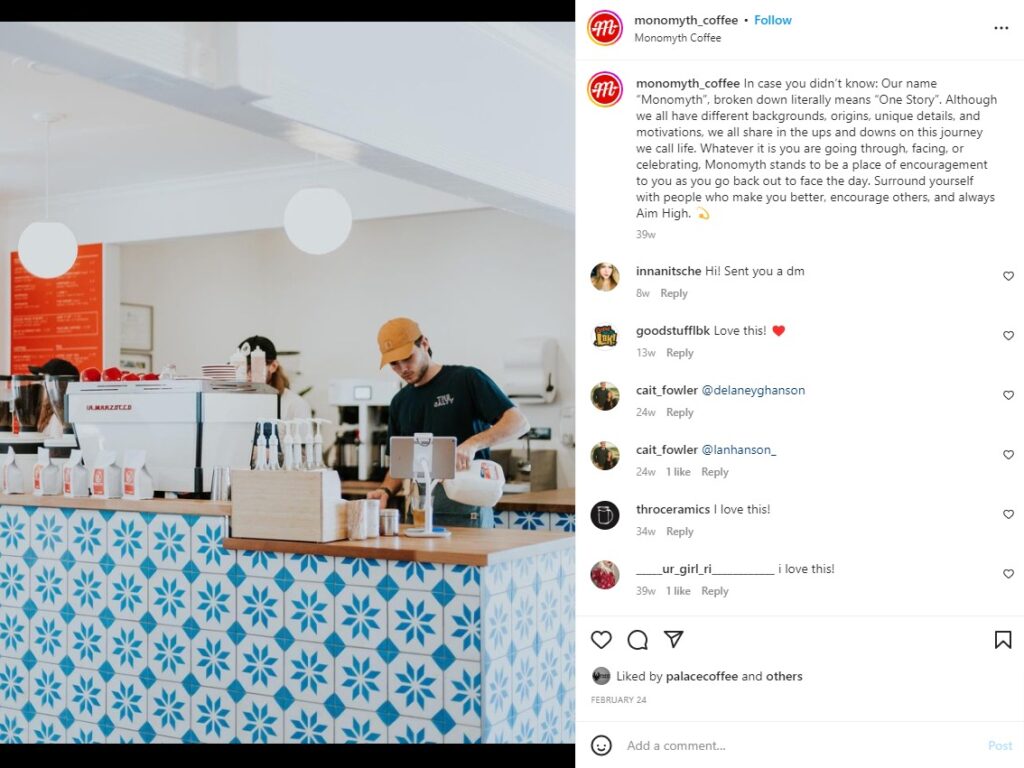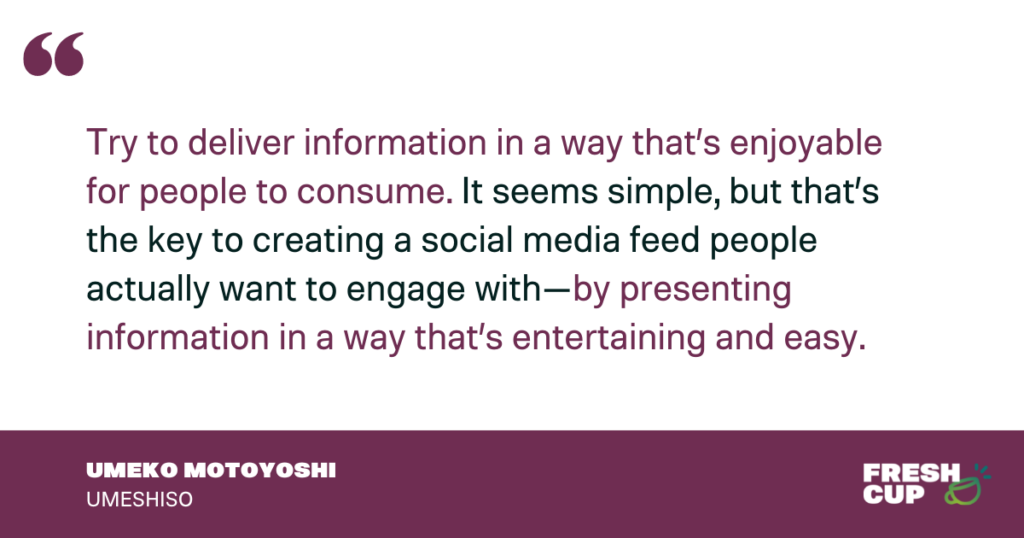When you think about Instagram, what comes to mind? Perfectly curated food shots? Memes? Photos of your friends’ pets?
When it comes to businesses, there are as many ways to use Instagram as there are users, and the options can be overwhelming. Whether your goal is to post more consistently, create a more cohesive vibe, gain more followers, or increase sales, Instagram can be a crucial platform to meet your goals.
But a great Instagram requires a great strategy.
We talked with three successful coffee Instagrammers to get their top tips on creating an effective strategy tailored to your business, how to gain followers and customers, and what they look for when measuring success.
Scroll With Purpose
Coffee marketer Jenn Chen has been in coffee for over a decade and works as a writer, photographer, and marketing consultant in the specialty coffee industry. As one might expect of a marketing consultant, Chen has concrete advice on crafting an Instagram strategy from scratch.
First is to take time to plan your strategy. “Spend time deciding on and documenting your strategy,” she says. “Choose a few goals, how you’ll measure their success, and how you’ll post to reach those goals. Describe the audience you want to target. Stick to a brand voice and image, so all the content is cohesive.”
The next Chen commandment is to be consistent—stick to a schedule you can execute. “This is one of the most basic tips out there, but it’s on the list for a reason. People will get too ambitious in their posting schedule and then lose traction when they realize how much work it can be,” she says.
She also recommends keeping a stash of evergreen (i.e., anytime) photos and videos. “You’ll inevitably find yourself wanting to post something—maybe you already have a caption in mind—but have no media to post with it. Evergreen content like a shot being pulled or coffee being roasted can be used with almost no limits.”
Showcasing a very different approach, Erica Escalante is now heading operations at goodboybob in LA, but before that, she owned and managed Portland-based Café Reina. Looking at resources for crafting an Instagram presence that would not only feel authentic but also increase foot traffic, she couldn’t find online resources that made sense for her café.
“As a busy working mom and café owner, I was overwhelmed by the work it required to post on Instagram consistently. Whenever I would listen to Instagram experts talk about their methods, I didn’t feel like any of them understood the brick-and-mortar piece,” she says. “I didn’t sell products online. I needed people to come in and spend money, to love my business.” She created her own strategy, which she shared on her personal Instagram so that others could learn from her work and experimentation.
In building a strategy, she first had to decide what was compelling about her café. “What was that unique factor that made it worthy of stopping by? I realized those were our beautiful products, our people, and myself. So I decided to show that and make it as genuine as possible. People in our society go to social media to feel connected. Connect them to something real, and real relationships will come.”
Escalante gets even more granular when thinking about Instagram for real-life spaces: “They say that Instagram is really your storefront online.” With that in mind, she asks: “What are your top 3-5 priorities in your company? Is it people? Quality beverages? Hospitality? Then really focus on showing those things. The pictures and the content need to reflect the heart of the company.”
Think about how each photo will reflect your values when planning your Instagram grid. In Escalante’s case, incorporating her café’s people—workers and customers—into photos of pastries and drinks, rather than posting them in isolation, allowed her to showcase that people were the vital force behind the food and drink the café serves.
The world of professional Instagram accounts can be sterile and formal. Industry veteran Umeko Motoyoshi’s Instagram feed for their business, Umeshiso, is anything but. Making the coffee world a queerer place by way of selling gay spoons and chopsticks on a sliding scale, Motoyoshi’s Instagram page is notably fun and absolutely unique.
Their top tip is to try making your content enjoyable, so potential customers want to engage with it. “Try to deliver information in a way that’s enjoyable for people to consume,” they say. “It seems simple, but that’s the key to creating a social media feed people actually want to engage with—by presenting information in a way that’s entertaining and easy.”
Feed Versus Story
One of the things that makes Instagram daunting is it contains two entire social media platforms: the feed, where static posts live, and stories, temporary posts that disappear after 24 hours (initially inspired by the success of Snapchat). Because they are so different, the feed and the story require different strategies.
“The grid is for permanent information, and the story is for temporary and casual posts,” says Chen. “These aren’t solid rules—I see accounts that successfully go against them, but it’s a good place to start if you’re new to Instagram. Imagine a new customer researching you: maybe they came across an ad or someone shared a coffee you roasted. They’ll go to your profile page, which will be the first impression they get, so you want to make it a good one!”
On the other hand, your story is more intimate because it engages extant clientele. “Your story is a chance to engage with the eyes you already have on you,” Escalante says. “It’s great for reiterating things you want to make sure your current audience sees, as well as more casual day-to-day posts that you think they’ll find interesting.”
Motoyoshi views the grid as where content useful for future reference lives. “For example, we have a wholesale program we’re promoting right now, and the wholesale content goes on the grid,” they say. “It’s an important and ongoing program that we want every person who comes to our Instagram to see.”
They also think it’s a good practice to prune your grid, deleting or editing past posts that may no longer be relevant.
“The story is more intimate,” they say. That’s where they go to share cat photos, memes, and reshare others’ posts when they tag Umeshiso. “Stories are also a great way to engage with my followers when they post content about my product,” they say. “It’s great to be able to reshare what they create.”
Grow Your Following or Grow Your Customer Base
While you might think that more followers equal more foot traffic, Escalante would say otherwise—particularly in a brick-and-mortar context like Café Reina. “Having a high follower count does not necessarily mean you increase your foot traffic,” she says. “Unless the followers you build are local, you most likely won’t see a correlation between the activity you’re getting on Instagram and your bottom line for a brick-and-mortar store.”
“It doesn’t have to be one or another,” says Chen. “An increase in follower count can lead to an increase in sales.” She notes that when going for follower count alone, the most direct route is to create content with “going viral” in mind. “That kind of content evokes an immediate, intense emotional reaction; it hooks you in like clickbait headlines; it’s short and digestible; it encourages a call-to-action such as sharing the post or tagging someone.”
She says that taking this approach can only go so far. “A company with tens of thousands of followers, filled with viral content, tries to appeal to everyone rather than creating a community of loyal customers.”
If you want to increase sales, “you should make it easy for the customer to access you and your products,” she says. “How many taps does it take for them to go from your post to purchasing a product? Check your posts: do they all read like marketing and sales copy? If so, you should mix it up; no one wants to look at a feed filled with ads.”
Chen also emphasizes customer experience on and offline. “Aim to resolve issues online the same way you would if they came up in person: don’t let direct messages sit for days, brush off complaints, or be rude.”
Measuring Likes
How do you know if what you’re doing is working? As Chen said previously, knowing your goals and how you plan to measure success is essential.
Motoyoshi cautions that there’s no one-size-fits-all approach to success metrics. “Your business goals will define your success metrics, but if you’re only looking at one number, you lose the context for why they’re important. Shares are what I look at because they tell me what’s resonant and enjoyable for my audience. Shares also help my Instagram grow,” they say, noting that the point of growth is not popularity; they need to make sales to sustain their business. So their metrics are directly linked to their business’s needs.
Metric-minded by nature, Chen advises looking into tools or platforms that can compile and analyze data. “You’ll want to identify a platform for regularly checking analytics and metrics. Instagram or Facebook/Meta Business Manager have some available for free,” she says.
Be Real—Even if that Doesn’t Mean Reel
Ahh, the dreaded algorithm. Like other social media apps, Instagram uses an algorithm to select posts and stories that are likely to engage its users. The algorithm changes frequently and can potentially feel out of step with your business’s authentic voice.
Right now, Instagram is heavily pushing Reels, or short-form video content, to compete with the popularity of TikTok. “It’s tough because short-form video content is being pushed, so to grow on Instagram, we have to make short-form video content,” says Motoyoshi. “That’s not easy for everyone. Even making good still photo content is not easy.”
Although they weren’t happy about the shift at first, they’ve handled it by focusing on making videos that feel genuinely fun to make and share, “that don’t feel like I’m following a template for what I should do. I try to approach it like I’m making videos for friends.”
But Motoyoshi says cautions if forcing yourself to make videos makes you hate Instagram, it’s not worth it. “You have a lot of freedom to define for yourself what you want to get out of your social media, what you want to make. It’s helpful to understand what other people are doing and how they’re doing it, but ultimately you have to establish a system and a framework and brand guidelines that are sustainable for you. If you hate doing it, it will not be sustainable.”
For video content, they recommend giving it a try and seeing how you like the results. “Try doing it in a way that feels good for you; see how other people respond. If you see an increase in sales and it works, it might feel like a better motivator, but if it doesn’t or is too taxing, don’t do it.”
For Escalante, authenticity is the key to success—on Instagram and beyond. “Be true to who you are as a company. If your company is more grassroots, show that. People can see through produced curation quickly. If your goal is to engage your neighborhood, be a neighbor online. Yes, the quality of your photos should be clear and well-lit, and your products should be beautiful, but if you focus on looks too much, your content will be hollow. Let your inside beauty shine through real content that reflects your personality.”
RJ Joseph is a coffee writer focusing primarily on equity, workers’ rights, and structural alternatives to the status quo. She’s been a barista, a roaster, a green coffee grader and lab tech, and finally made coffee writing her full-time gig at Red Fox Coffee Merchants. In her decade in coffee, she’s also run a queer coffee events organization, written a blog on equity in coffee, and run a coffee satire website called The Knockbox. If you see her around, say hi.



